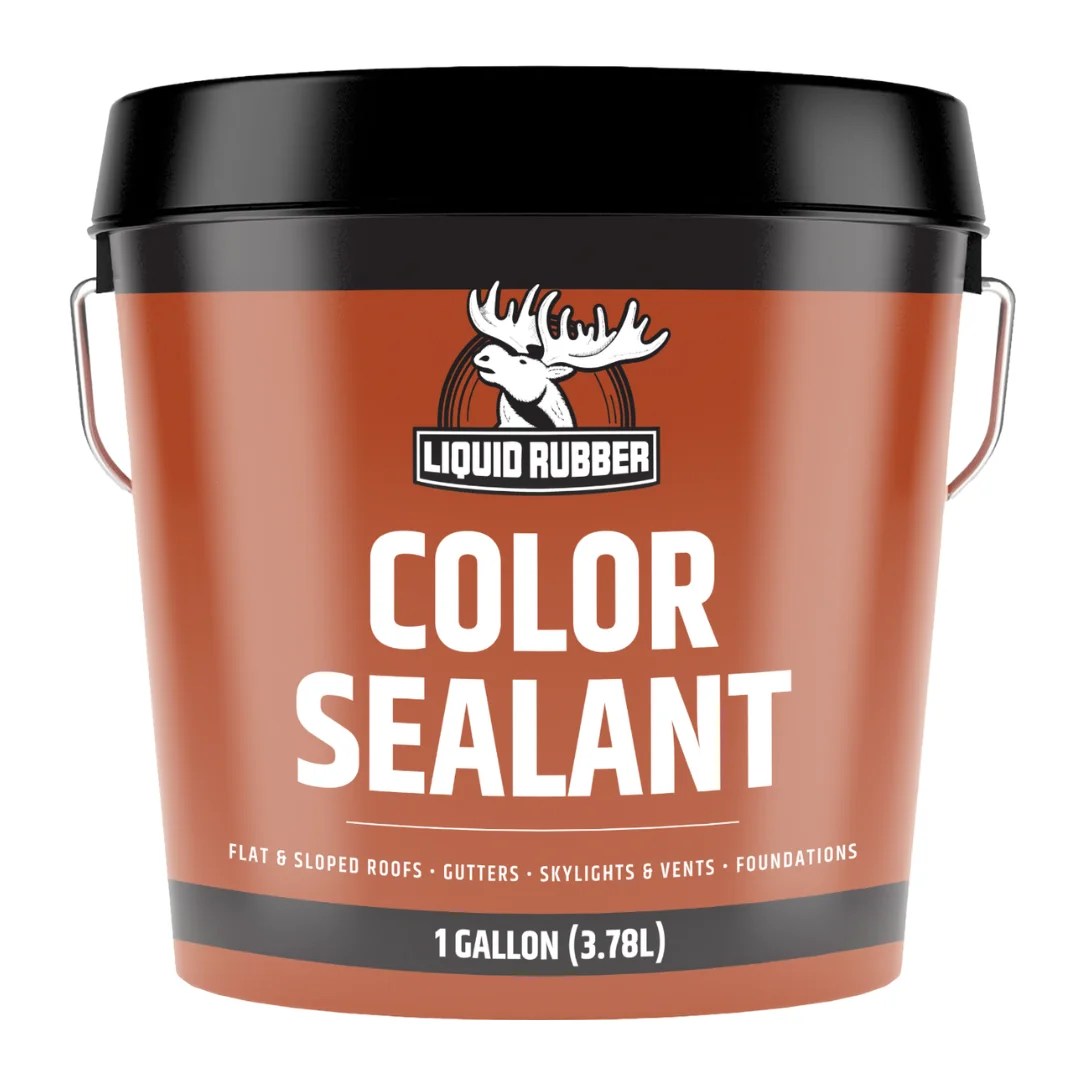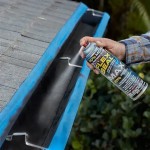Liquid Rubber Foundation Sealant Basement Coating: Understanding the Safety Data Sheet
Liquid rubber foundation sealant basement coating is a popular choice for waterproofing and protecting below-grade structures. Its application involves applying a flexible, rubber-like membrane to the exterior of foundation walls, preventing water ingress and potentially mitigating structural damage. While offering substantial benefits in terms of waterproofing, understanding the product's safety data sheet (SDS) is crucial for safe handling, application, and storage. The SDS provides comprehensive information regarding the product's potential hazards, composition, first-aid measures, and other essential details pertinent to protecting workers and the environment.
This article aims to provide a thorough overview of the key sections typically found in an SDS for liquid rubber foundation sealant basement coatings, emphasizing the information vital for contractors, homeowners, and anyone involved in the application or management of these materials. The information presented here is designed to enhance understanding and promote responsible use of liquid rubber products.
Understanding the Key Sections of a Safety Data Sheet
An SDS is structured into sixteen distinct sections, each addressing a specific aspect of the product's safety profile. Familiarity with these sections is essential for interpreting the information and taking appropriate precautions. The following sections are particularly relevant for liquid rubber foundation sealant basement coatings:
Section 1: Identification This section provides basic information about the product, including the product name, manufacturer's name and contact information, recommended use, and any restrictions on use. It also includes emergency contact information, which is crucial in case of accidents or spills.
Section 2: Hazard(s) Identification This section is arguably one of the most important, as it outlines the potential hazards associated with the liquid rubber coating. It includes hazard classifications (e.g., flammable, irritant, carcinogenic), signal words (e.g., Danger, Warning), hazard statements (e.g., Causes skin irritation, May cause respiratory irritation), and precautionary statements (e.g., Wear protective gloves, Avoid breathing vapors). It also includes information on the potential physical, health, and environmental hazards.
Section 3: Composition/Information on Ingredients This section details the chemical composition of the liquid rubber coating, including the names and concentrations of hazardous ingredients. Understanding the specific chemical components allows users to identify potential allergens or substances that may pose specific health risks. This section typically includes the Chemical Abstracts Service (CAS) registry numbers for each ingredient, allowing for further research and identification.
Section 4: First-Aid Measures This section outlines the necessary first-aid procedures to follow in case of exposure to the liquid rubber coating. It provides specific instructions for inhalation, skin contact, eye contact, and ingestion. It also includes information on the most important symptoms or effects, both acute and delayed, and any special treatment needed. This information is critical for responding effectively to accidental exposures and minimizing potential health consequences.
Section 5: Fire-Fighting Measures This section addresses the flammability characteristics of the liquid rubber coating and provides guidance on appropriate fire-fighting techniques. It includes information on suitable extinguishing media, specific hazards arising from the chemical (e.g., hazardous combustion products), and special protective equipment and precautions for fire-fighters. Understanding the fire hazards is crucial for preventing and mitigating fires during storage, handling, and application.
Section 6: Accidental Release Measures This section provides guidance on how to respond to accidental releases or spills of the liquid rubber coating. It includes information on personal precautions (e.g., wearing protective equipment), environmental precautions (e.g., preventing entry into waterways), and methods and materials for containment and cleaning up the spill. Proper spill control measures are essential for minimizing environmental contamination and preventing potential hazards to workers.
Section 7: Handling and Storage This section outlines safe handling and storage practices for the liquid rubber coating. It includes information on precautions for safe handling (e.g., avoiding contact with skin and eyes, using adequate ventilation), conditions for safe storage (e.g., storing in a cool, dry place, away from incompatible materials), and any specific requirements for packaging and containers. Following these guidelines is crucial for preventing accidents and maintaining the product's integrity.
Section 8: Exposure Controls/Personal Protection This section specifies the exposure limits (e.g., permissible exposure limits (PELs), threshold limit values (TLVs)) for hazardous ingredients and provides guidance on appropriate engineering controls and personal protective equipment (PPE) to minimize worker exposure. It includes recommendations for ventilation, respiratory protection, eye protection, skin protection, and hand protection. Selecting and using the appropriate PPE is essential for protecting workers from potential health hazards.
Section 9: Physical and Chemical Properties This section provides information on the physical and chemical properties of the liquid rubber coating, such as its appearance, odor, pH, melting point/freezing point, boiling point, flash point, evaporation rate, flammability, vapor pressure, vapor density, relative density, solubility, partition coefficient, auto-ignition temperature, and decomposition temperature. Understanding these properties can help users assess the potential hazards associated with the product and select appropriate handling and storage methods.
Section 10: Stability and Reactivity This section describes the stability of the liquid rubber coating and the potential for hazardous reactions. It includes information on reactivity, chemical stability, possibility of hazardous reactions, conditions to avoid (e.g., high temperatures, incompatible materials), and incompatible materials. Understanding the stability and reactivity of the product is crucial for preventing dangerous reactions and ensuring safe storage and handling.
Section 11: Toxicological Information This section provides information on the potential health effects of exposure to the liquid rubber coating, including acute toxicity (e.g., LD50, LC50), skin corrosion/irritation, serious eye damage/eye irritation, respiratory or skin sensitization, germ cell mutagenicity, carcinogenicity, reproductive toxicity, specific target organ toxicity (single exposure), specific target organ toxicity (repeated exposure), and aspiration hazard. This section provides a comprehensive overview of the potential health risks associated with the product.
Section 12: Ecological Information This section provides information on the potential environmental effects of the liquid rubber coating, including ecotoxicity, persistence and degradability, bioaccumulative potential, and mobility in soil. Understanding the environmental impact of the product is crucial for minimizing pollution and protecting ecosystems.
Section 13: Disposal Considerations This section provides guidance on the proper disposal of the liquid rubber coating and its containers. It includes information on waste treatment methods and disposal requirements. Following proper disposal procedures is essential for preventing environmental contamination and complying with regulations.
Section 14: Transport Information This section provides information on the proper transportation of the liquid rubber coating, including the UN number, proper shipping name, hazard class, packing group, and any special precautions. Complying with transportation regulations is essential for ensuring safe transport and preventing accidents.
Section 15: Regulatory Information This section identifies any applicable federal, state, or local regulations that govern the product. This may include information on hazard communication standards, environmental regulations, and transportation regulations.
Section 16: Other Information This section provides any other relevant information, such as the date of preparation or revision of the SDS, a description of any changes made to the SDS since the previous version, and any other important information not covered in the previous sections.
Key Hazards and Precautions
Liquid rubber foundation sealants, while generally considered safer than solvent-based alternatives, can still present potential hazards. The SDS will identify specific risks, but common concerns include:
Skin and Eye Irritation: Many liquid rubber products can cause irritation upon contact with skin or eyes. This is often due to the presence of additives or emulsifiers in the formulation. Wearing appropriate protective gloves and eye protection (safety glasses or goggles) is crucial during handling and application. If contact occurs, immediate flushing with water is essential.
Respiratory Irritation: While often low-VOC (volatile organic compound), some liquid rubber products may still release vapors or mists during application that can cause respiratory irritation, especially in poorly ventilated areas. The SDS will detail the specific VOC content and recommend appropriate ventilation measures. Using respirators with appropriate filters may be necessary when working in enclosed spaces or during spray application.
Environmental Concerns: While designed for waterproofing, improper disposal of liquid rubber or spills can lead to environmental contamination. The SDS will provide guidance on proper disposal methods and spill containment procedures. Avoid allowing the product to enter drains or waterways.
Proper Personal Protective Equipment (PPE)
The SDS emphasizes the need for appropriate PPE to minimize worker exposure to potential hazards. Based on the information found in the SDS, the following PPE is generally recommended when working with liquid rubber foundation sealants:
Eye Protection: Safety glasses or goggles are essential to protect the eyes from splashes and vapors. Goggles provide a more secure seal and are recommended for applications where there is a higher risk of splashing.
Skin Protection: Chemical-resistant gloves are crucial for preventing skin contact. The SDS may specify the recommended glove material (e.g., nitrile, neoprene) based on the chemical composition of the product. Long-sleeved shirts and pants can also provide additional skin protection.
Respiratory Protection: If adequate ventilation is not available or the SDS indicates a risk of respiratory irritation, a respirator with appropriate filters should be used. The type of respirator and filter will depend on the specific hazards identified in the SDS. For example, an organic vapor respirator may be required if the product contains volatile organic compounds.
Protective Footwear: Closed-toe shoes or boots are recommended to protect feet from spills and potential injuries.
By carefully reviewing and understanding the SDS, individuals involved in the handling, application, and storage of liquid rubber foundation sealant basement coatings can significantly reduce the risk of accidents and health problems. Prioritizing safety and adhering to the recommendations outlined in the SDS ensures a safer working environment and minimizes the potential impact on the environment.

Liquid Rubber Concrete Foundation And Basement Sealant 640 Oz Black 20602us The Home

Liquid Rubber Concrete Foundation And Basement Sealant 640 Oz Black 20602us The Home

Liquid Rubber Concrete Foundation And Basement Sealant 640 Oz Black 20602us The Home

Liquid Rubber Color Sealant Dark Gray Flat Solid Water Based Mildew Resistant Mold Interior Exterior Waterproofer 5 Gallon In The Waterproofers Sealers Department At Lowes Com

Foundation Sealer For Solid Protection Liquid Rubber

Liquid Rubber Foundation And Basement Sealant Indoor Outdoor Use Easy To Apply Waterproof Coating Black 1 Gallon Walmart Com

Liquid Rubber Concrete Foundation And Basement Sealant 640 Oz Black 20602us The Home

Color Waterproof Sealant Liquid Rubber Leak Repair Water Based Coating

Liquid Rubber Foundation Sealant Black Flat Solid Water Based Mildew Resistant Mold Interior Exterior Waterproofer 5 Gallon In The Waterproofers Sealers Department At Lowes Com

Diy Basement Waterproofing System Products 1 866 784 3308







